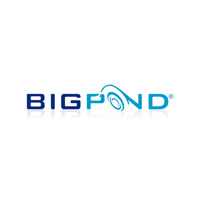In the ever-evolving digital marketing landscape, understanding which advertising approach to adopt can make or break a campaign. Among the myriad options available, two popular methods have emerged: demand generation (demand gen) and discovery ads. Each offers unique strengths and serves different purposes in a comprehensive marketing strategy. This article delves into the key differences between demand gen and discovery ads, helping you decide which is best suited for your business needs.
What is Demand Gen?
Demand Generation, often called demand gen, is a holistic marketing strategy focused on driving awareness and interest in a product or service. It encompasses various tactics designed to attract potential customers throughout their purchasing journey. Unlike traditional advertising methods like Paid Search that push products directly, demand gen aims to create a relationship with the audience, effectively nurturing leads until they are ready to convert. This approach often leverages content marketing, social media engagement and email campaigns to build trust and educate prospective buyers.
What are Discovery Ads?
On the other hand, discovery ads are strategically designed to capture the attention of users who may not be actively searching for a product but are open to exploring new options. These visually rich ads appear across various Google Advertising platforms, including Google Discover, YouTube and Gmail, based on the user’s interests and behaviours. Discovery ads aim to make an impression and spark curiosity, enticing users to click through and learn more. This method is particularly effective for brands looking to expand their reach and target a broader audience.
Demand Gen vs Discovery Ads: Choosing the Right Strategy
When comparing demand gen and discovery ads, it is crucial to evaluate your business objectives. If your focus is on building long-term relationships and nurturing leads through the buying cycle, demand gen may be the way to go. It emphasises creating valuable content that addresses consumers’ pain points, leading to higher-quality leads over time.
Conversely, if your goal is to increase brand visibility and attract new customers who might still need to be made aware of your offerings, discovery ads can provide a significant advantage. Their promotional nature and strategic placement allow brands to capture the interest of potential customers in a subtle yet impactful way.
The Role of Targeting in Demand Gen
One of the distinguishing features of demand gen is its emphasis on targeting specific audience segments. Marketers can tailor their messaging to resonate with particular demographics, interests and behaviours by using data analytics and customer insights. This targeted approach increases the chances of conversion and enhances customer satisfaction as users receive content that aligns with their needs and preferences. Crafting personalised experiences can lead to stronger brand loyalty and higher engagement rates over time.
Discovery Ads: Capturing Interest at the Right Moment
In contrast, discovery ads operate on a different premise focusing more on seizing fleeting moments of opportunity. These ads are strategically placed in environments where users are already engaged — scrolling through feeds, watching videos or checking their emails. By aligning the ad content with the user’s current context, discovery ads can immediately pique interest, leading to higher click-through rates and potential conversions. This immediacy is particularly useful for brands aiming to make a memorable first impression on potential customers.
Measuring Success in Demand Gen vs. Discovery Ads
The metrics for evaluating success in demand gen and discovery ads also differ. In demand generation, marketers typically focus on metrics such as lead quality, the cost per lead and the overall customer lifetime value. These indicators help gauge how effectively a brand builds relationships and steers prospects through the sales funnel.
For discovery ads, however, key performance indicators include reach, engagement rate and conversion rates from initial clicks. Brands may prioritise metrics demonstrating how well they capture audience attention and drive website traffic. By understanding these different metrics, marketers can adjust their strategies accordingly and measure the effectiveness of each approach.
Aligning with Business Objectives
When selecting between demand gen and discovery ads, it’s essential to consider your broader business objectives. If your primary aim is to educate the market and establish authority within your industry, demand gen strategies can facilitate this journey through informative content and personalised interactions. This is particularly beneficial for B2B companies or those offering complex products that require a higher degree of customer education.
In contrast, companies looking to increase immediate visibility, perhaps during a product launch or seasonal promotion, may find discovery ads more advantageous. The ability to reach users at scale and create engaging visuals can drive quick awareness and customer interest, making it easier to achieve rapid results.
Both demand gen and discovery ads play essential roles in a well-rounded marketing strategy. While demand gen focuses on nurturing relationships and creating a steady pipeline of leads, discovery ads excel at broadening your reach and engaging a diverse audience. Ultimately, the best results come from combining these strategies to create a comprehensive approach that addresses both immediate and long-term marketing objectives.
Contact us today and effectively leverage the strengths of each method. Capture, nurture and convert leads efficiently and feel reassured in their marketing strategy.








